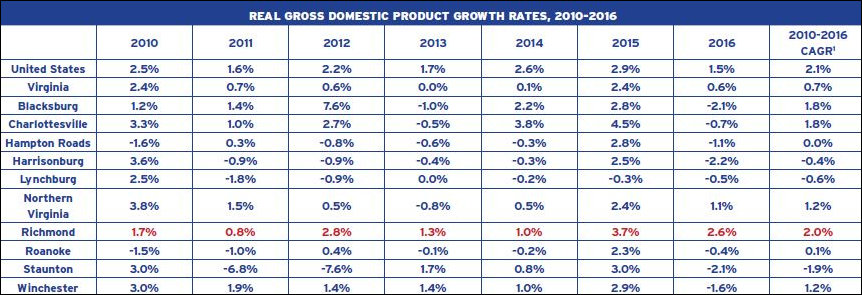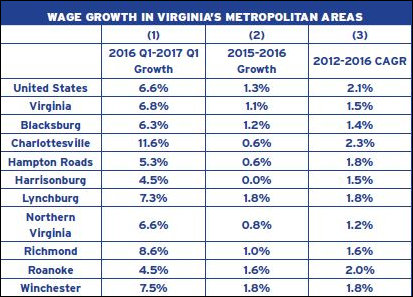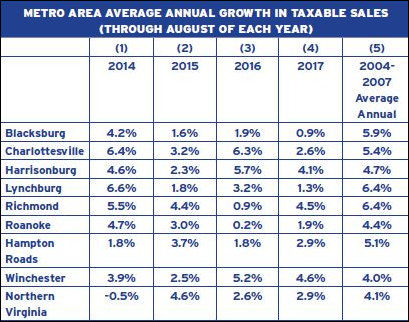Northern Virginia has set the pace for economic growth in Virginia for so long, it’s hard to remember when any other region led the way. But this decade’s contraction of the defense industry has hit the NoVa regional economy hard. Inflation-adjusted growth in the Gross Domestic Product between 2010 and 2016 averaged only 1.2% in Northern Virginia, according to the 2017 State of the Commonwealth Report. Thanks to the innovation capacity of NoVa’s technology sector, the growth rate could have been far worse. Hampton Roads, also dependent upon military spending, experienced essentially zero growth over the same period.
Economic growth leadership for the past several years has shifted to the Richmond, Charlottesville and Blacksburg metropolitan areas. Richmond experienced 2.0% growth, while the home towns of the Hoos and Hokies racked up 1.8% annualized growth. Not one metro area matched the U.S. average growth rate of 2.1%, however. The economies of Staunton, Harrisonburg and Lynchburg actually contracted. (The figures don’t tell us about non-metropolitan Virginia, but the picture probably wasn’t pretty.)
Here’s the State of the Commonwealth report’s breakdown of GDP growth by metropolitan area (click for more legible image):

Somewhat different story for wage growth: Here Charlottesville and Roanoke led the way. Northern Virginia was the state laggard.

And one more measure, taxable sales, where Richmond and Lynchburg blazed new paths to consumer excess:



